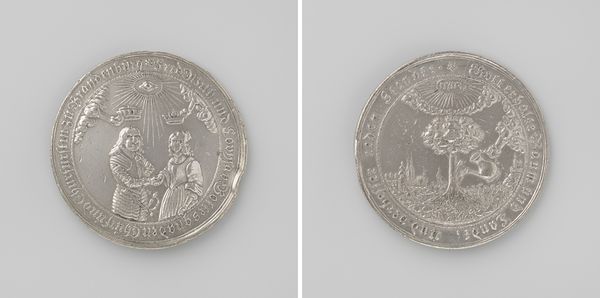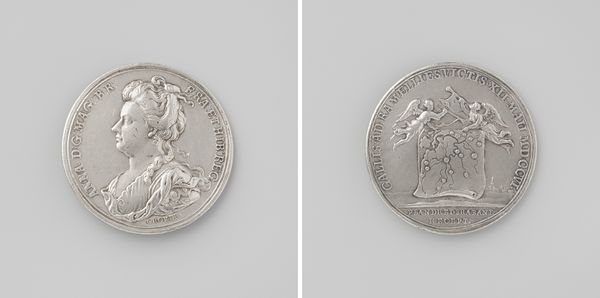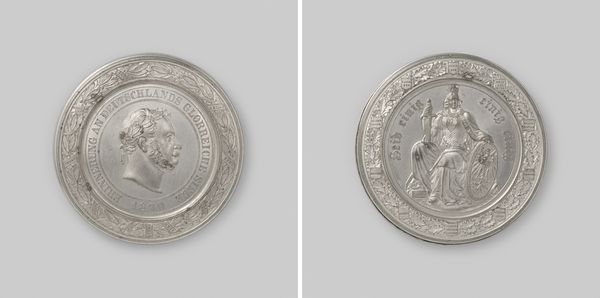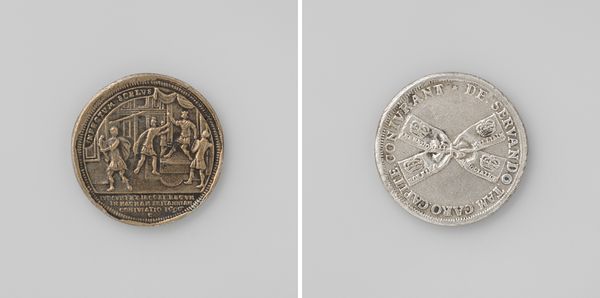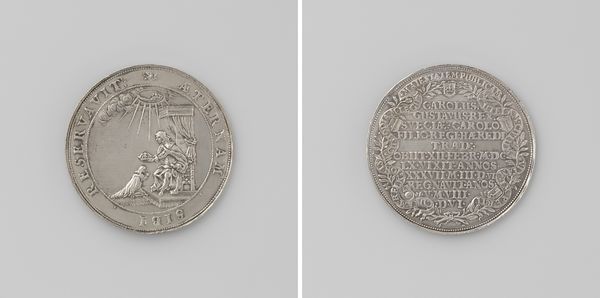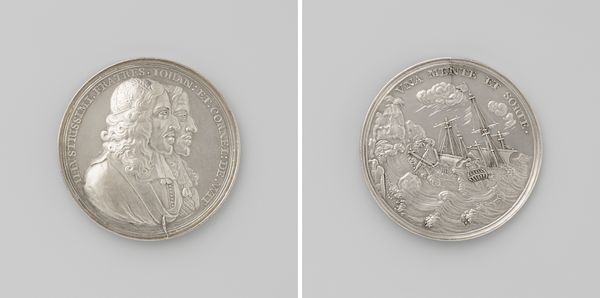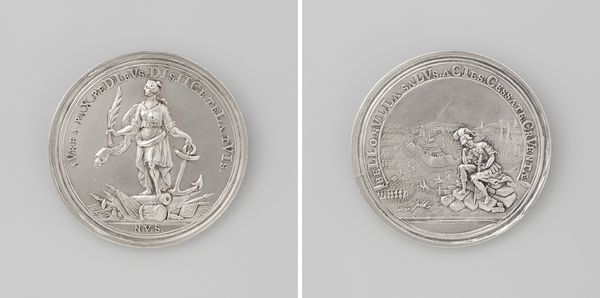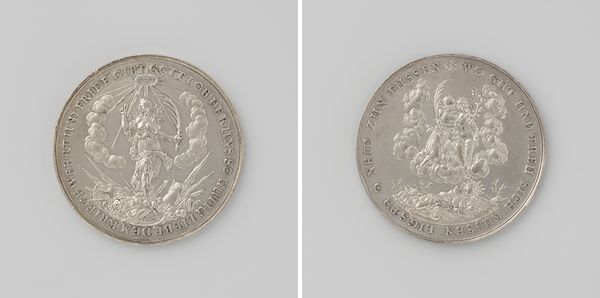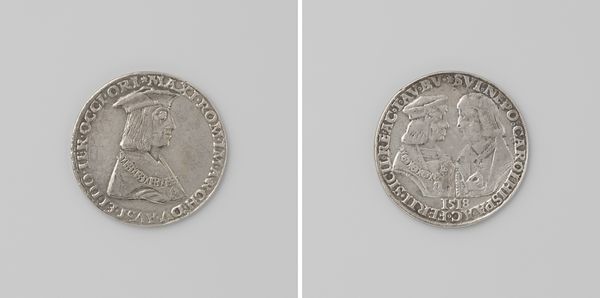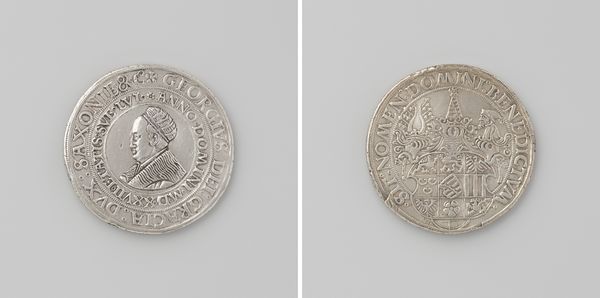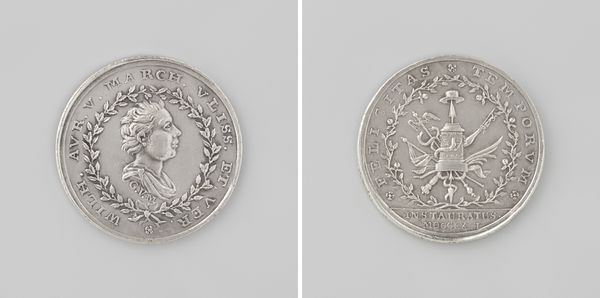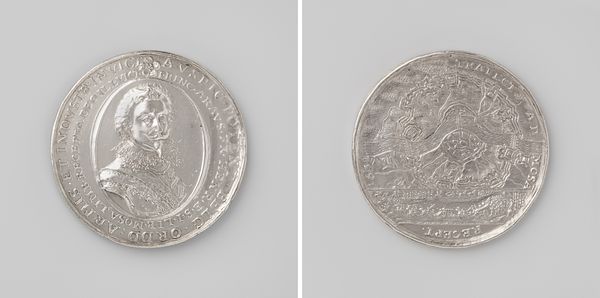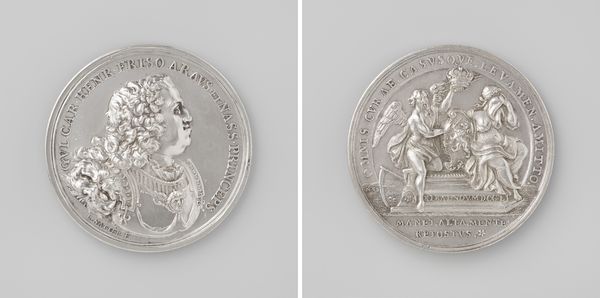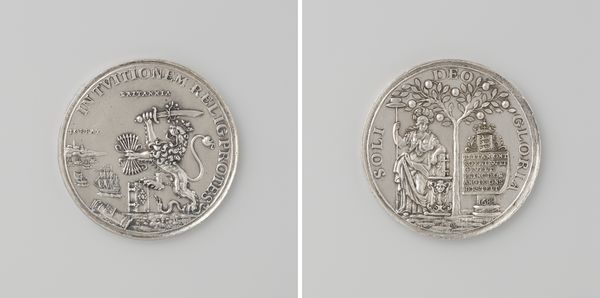
Inhuldiging van Willem V, prins van Oranje-Nassau, als erfelijk stadhouder van de Nederlanden 1766
0:00
0:00
Dimensions: diameter 3.2 cm, weight 13.96 gr
Copyright: Rijks Museum: Open Domain
Curator: This engraving by Carel Frederik Konsé dating back to 1766 is entitled, "Inhuldiging van Willem V, prins van Oranje-Nassau, als erfelijk stadhouder van de Nederlanden," which translates to "The inauguration of William V, Prince of Orange-Nassau, as hereditary stadtholder of the Netherlands." Editor: My first impression is one of classical formality; its circular composition and precise engraving seem perfectly suited for commemorating such a momentous event as a prince's inauguration. It feels like a formal portrait, but rendered as a commemorative coin. Curator: Indeed. Commemorative medals were often created to mark significant events, functioning as both records and pieces of political messaging. This one visualizes the complex socio-political dynamics of the era, where inherited power met nascent ideas about a unified nation. Editor: What's especially intriguing is how Konsé manages to convey both the Prince's individual status through his portrait on one side, and this complex imagery on the other with this classical-looking boat and people. Curator: The imagery definitely speaks volumes. The use of Latin inscriptions reflects the intellectual climate of the period. "FELICITER...CLAVVM" - may they auspiciously accept the helm" refers to the power bestowed on Prince William V and reflects a visual style heavily indebted to Baroque conventions, evoking classical ideals to legitimize the new political era. Editor: This is where the engraving prompts consideration for our present moment, as we still debate legacies of power, hereditary positions, and the iconography of leadership. It serves as a poignant historical anchor for contemporary discourse on the meaning of symbolic representation and sociopolitical capital. Curator: A strong observation. By depicting the investiture of William V in this manner, Konsé not only documented an event but also constructed a particular narrative around it, one that interweaves tradition with political strategy. It also allows us to ask how leadership transitions are handled and portrayed, reminding us to be skeptical about the seemingly immutable image of power. Editor: Right. I suppose an object like this always retains the capacity to instigate those critical examinations. Curator: Precisely. Thank you for providing that enriching social and political reading.
Comments
No comments
Be the first to comment and join the conversation on the ultimate creative platform.
